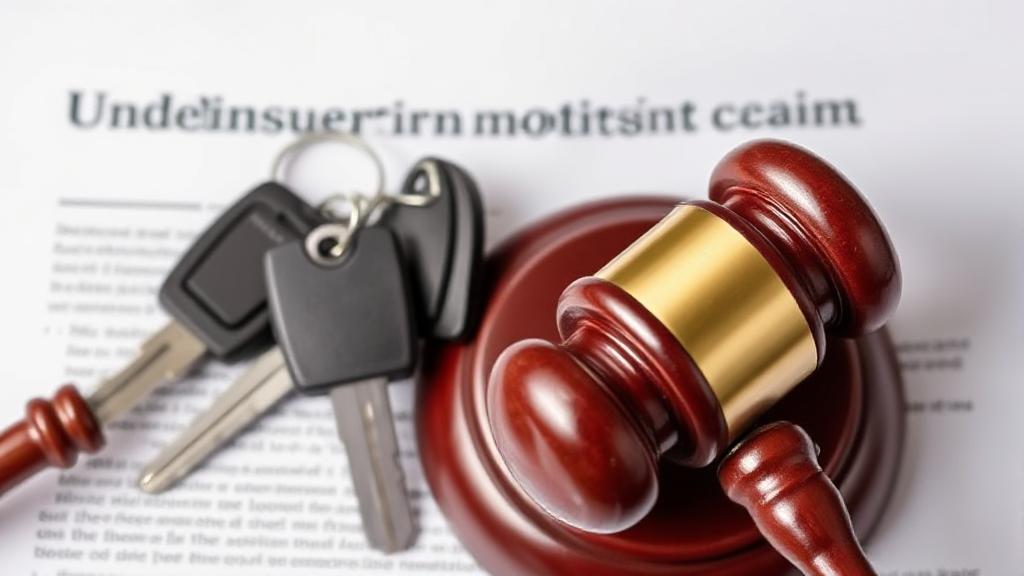Introduction
When you're involved in a car accident, the aftermath can be overwhelming, especially if the at-fault driver is underinsured. Understanding how compensation works in an underinsured motorist claim is crucial for protecting your financial interests and ensuring you receive the support you need.
What is Underinsured Motorist Coverage?
An underinsured motorist is a driver whose insurance policy limits are insufficient to cover the full extent of damages they've caused. For example, if a driver carries only $25,000 in liability coverage but causes $75,000 in damages, they would be considered underinsured.
UIM coverage is designed to bridge the gap between the at-fault driver's insurance and the actual costs incurred from the accident. For more detailed information, visit Insurance Information Institute.
Key Features of UIM Coverage
- Protection Against Insufficient Coverage: UIM coverage kicks in when the at-fault driver's liability limits are lower than your damages
- Covers Various Damages: It can cover medical expenses, lost wages, pain and suffering, and other related costs
- Policy Limits: The amount you can claim depends on the limits of your UIM policy
Types of Available Compensation
Medical Expenses
- Emergency room visits
- Hospital stays
- Surgery costs
- Physical therapy
- Ongoing medical treatment
- Prescription medications
Lost Wages and Income
- Current lost wages
- Future earning capacity
- Business opportunities missed
- Benefits and bonuses forfeited
Property Damage
- Vehicle repairs or replacement
- Personal property damaged in the accident
- Rental car expenses
- Diminished value of your vehicle
Pain and Suffering
"Pain and suffering damages often constitute a significant portion of underinsured motorist claims, yet they're frequently overlooked by accident victims." - American Bar Association
How to File an Underinsured Motorist Claim
Filing a UIM claim involves several steps:
- Report the Accident: Notify your insurance company as soon as possible
- Gather Evidence: Collect documentation, including police reports, medical records, and correspondence
- Submit a Claim: File a claim with your insurance company with all evidence
- Negotiation: Your insurer will evaluate and negotiate the settlement
- Settlement or Litigation: If an agreement is reached, the claim is settled; if not, legal action may be necessary
Policy Limitations
Many policies contain specific limitations and exclusions. Review your policy carefully:
| Coverage Type | Typical Limits | Important Considerations |
|---|---|---|
| Bodily Injury | $100,000 | Per person limit applies |
| Property Damage | $50,000 | May not cover all vehicles |
| Aggregate Limit | $300,000 | Total available per accident |
Tips for Maximizing Your Compensation
To ensure you receive the maximum compensation possible:
- Document everything related to the accident
- Seek immediate medical attention
- Keep detailed records of all expenses
- Don't accept initial settlement offers
- Consider hiring an experienced attorney
- Be persistent in negotiations
- Understand your policy terms
For more tips on handling insurance claims, visit Consumer Reports.
Working with Insurance Companies
Best Practices
- Communicate in writing
- Keep detailed records
- Don't provide recorded statements without legal counsel
- Review all documents carefully before signing
Legal Representation
Consider consulting with a personal injury attorney who specializes in underinsured motorist claims. They can:
- Evaluate your claim's worth
- Handle insurance negotiations
- Protect your legal rights
- Maximize your compensation
- Navigate complex legal procedures
For a comprehensive guide on filing claims, check out Nolo's Guide to Car Accident Claims.
